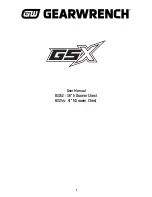
Chapter 1. Introduction to IBM Flex Systems and IBM PureSystems offerings
31
IBM Flex System V7000 Storage Node is designed to integrate into the IBM PureFlex System
or IBM Flex System to enable extremely rapid storage deployment and breakthrough
management simplicity. This new class of storage system combines no-compromise design
along with virtualization, efficiency, and performance capabilities of IBM Storwize V7000. It
helps simplify and speed PureFlex System and IBM Flex System infrastructure deployment
with superior server and storage management integration to automate and streamline
provisioning and to help organizations achieve greater responsiveness to business needs
while reducing costs.
For more information about IBM Real-time Compression in relation to IBM SAN Volume
Controller and IBM Storwize V7000, see Real-time Compression in SAN Volume Controller
and Storwize V7000, REDP-4859.
Highlights
Here are the highlights of IBM Storwize V7000 and IBM Flex System V7000 Storage Node:
Delivers sophisticated enterprise-class storage function for businesses of all sizes
Supports your growing business requirements while controlling costs
Provides up to 200 percent performance improvement with automatic migration to
high-performing Solid State Drives
IBM Storwize V7000 and IBM Flex System V7000 Storage Node enable storing up to five
times as much active data in the same physical disk space using IBM Real-time
Compression
1
Enables near-continuous availability of applications through dynamic migration
Supports faster and more efficient data copies for online backup, testing or data mining
Offers flexible server and storage management with easy to use GUI for block and file
storage management
IBM Storwize V7000 and IBM Flex System V7000 Storage Node are powerful block storage
systems that combine hardware and software components to provide a single point of control
to help support improved storage efficiency. By enabling virtualization, consolidation, and
tiering in business of all sizes, it is designed to improve application availability and resource
utilization. The system offers easy-to-use, efficient, and cost-effective management
capabilities for both new and existing storage resources in your IT infrastructure.
Enhancing access with Easy Tier
IBM Easy Tier® provides automatic migration of frequently accessed data to high performing
Solid State Drives (SSDs), enhancing usage efficiencies. Operating at a fine granularity, the
Easy Tier function automatically repositions pieces of the data to the appropriate class of
drives based on I/O patterns and drive characteristics with no further administrative
interaction.
Easy Tier makes it easy and economical to deploy SSDs in your environment. A hybrid pool
of storage capacity is created containing two tiers: SSD and Hard Disk Drive (HDD). The
busiest portions of volumes are identified and automatically relocated to high-performance
SSDs. Remaining data can take advantage of higher capacity, price-optimized drives for the
best customer value. Volumes in an SSD-managed or HDD-managed disk group are
monitored and can be managed automatically or manually by moving hot extents to SSD and
cold extents to HDD.
1
IBM lab measurements
Summary of Contents for Storwize V7000
Page 2: ......
Page 12: ...x IBM Flex System V7000 Storage Node Introduction and Implementation Guide...
Page 18: ...xvi IBM Flex System V7000 Storage Node Introduction and Implementation Guide...
Page 20: ...xviii IBM Flex System V7000 Storage Node Introduction and Implementation Guide...
Page 176: ...156 IBM Flex System V7000 Storage Node Introduction and Implementation Guide...
Page 208: ...188 IBM Flex System V7000 Storage Node Introduction and Implementation Guide...
Page 332: ...312 IBM Flex System V7000 Storage Node Introduction and Implementation Guide...
Page 476: ...456 IBM Flex System V7000 Storage Node Introduction and Implementation Guide...
Page 530: ...510 IBM Flex System V7000 Storage Node Introduction and Implementation Guide...
Page 664: ...644 IBM Flex System V7000 Storage Node Introduction and Implementation Guide...
Page 669: ......
















































